How To Connect A Tablet To A Projector? Wireless & Wired Solutions
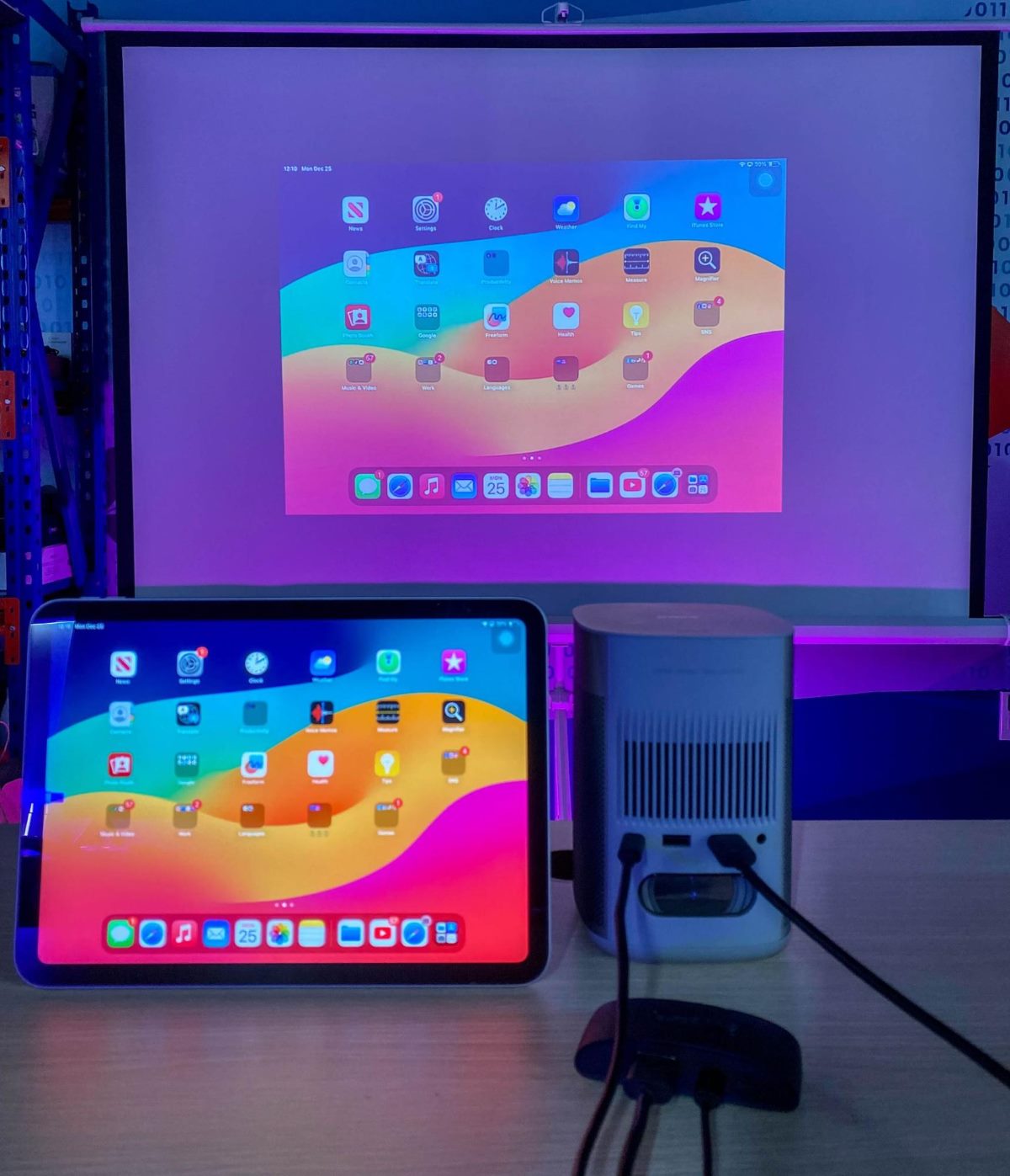
What To Know
- Wireless connections can be made by using a streaming device like Chromecast or Roku with non-smart projectors or by using built-in screen mirroring features in smart projectors.
- For wired connections, users must choose the right converter (USB-C to HDMI, Lightning to HDMI, USB-C to VGA, or MHL to HDMI) based on their tablet and projector ports.
In this guide, I’ll show you easy ways to connect your tablet to a projector using both wireless and wired solutions.
Let’s jump in!
Quick Navigation
Wireless Solutions
Use a Streaming Device for Non-Smart Projectors
If you have a non-smart projector, you can still connect your tablet to the projector using a streaming device such as a Chromecast or Roku player.
You’ll need an HDMI cable for this setup.
This method is great because it works with all projectors, whether they are smart type or not.
I’m going to show you how to do this with my 10th-gen iPad, a Roku Express 4K, and an XGIMI MoGo 2 projector.
Here’s what you do:
Step 1: Connect the Roku Express to the projector using the HDMI cable.
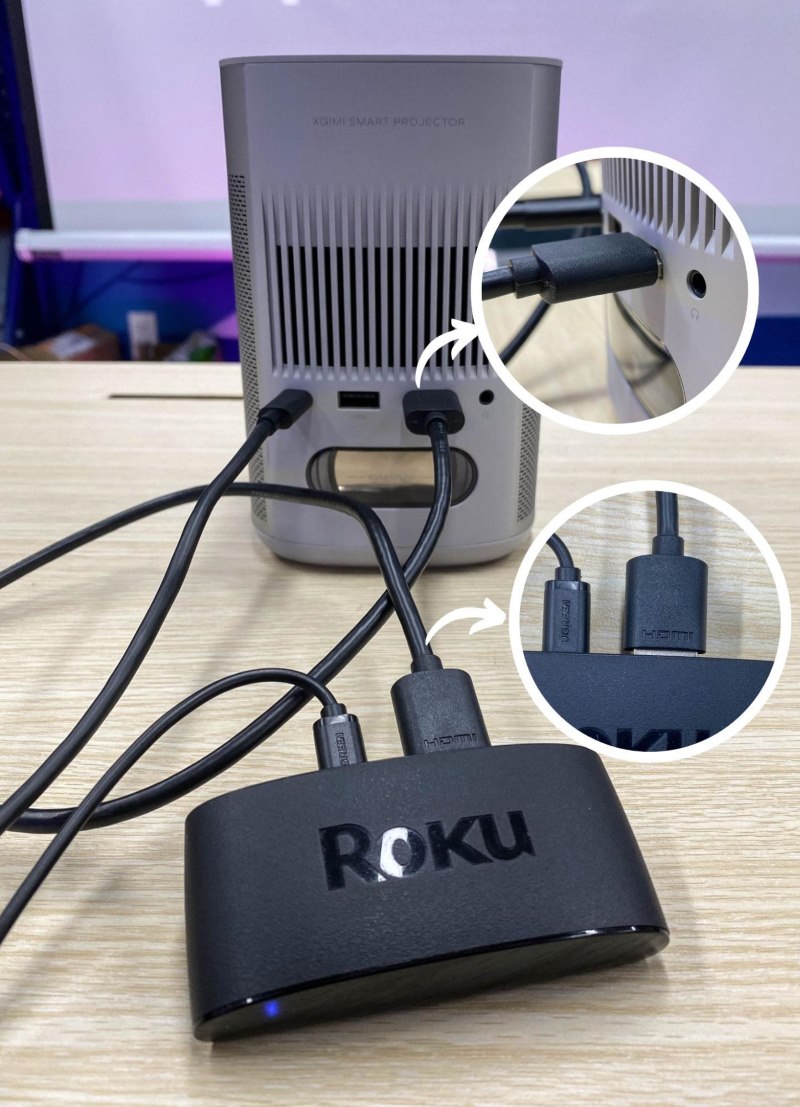
Step 2: If necessary, switch the projector’s input to HDMI to show the Roku screen.
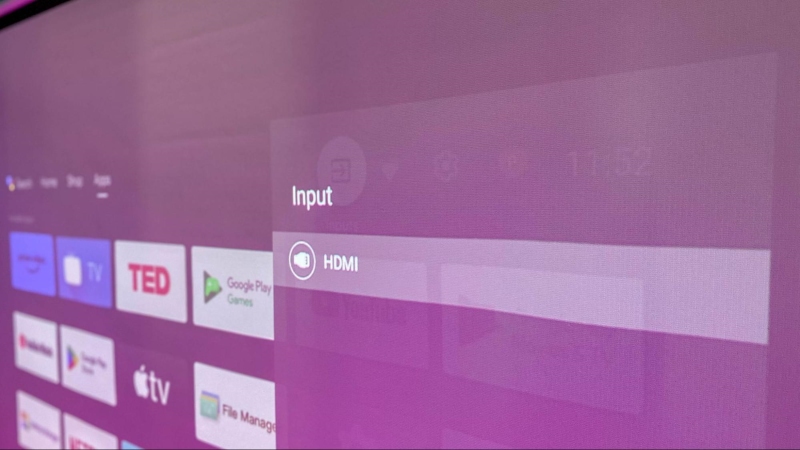
Step 3: On your iPad, pull down to open the Control Center, then click on the Screen Mirroring icon.
![]()
Step 4: Select Roku Express from the list of devices you see.
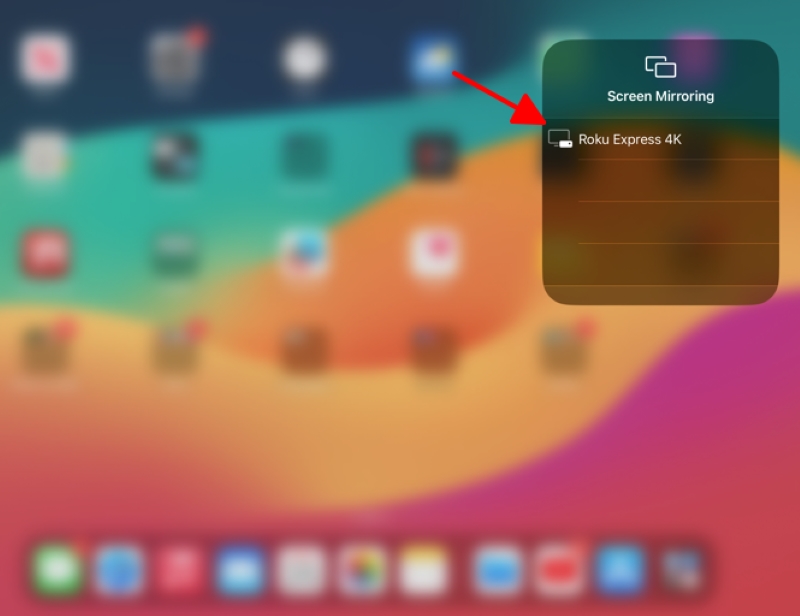
Step 5: An AirPlay code will show up on your projector’s screen, just type this code into your iPad to finish setting it up.

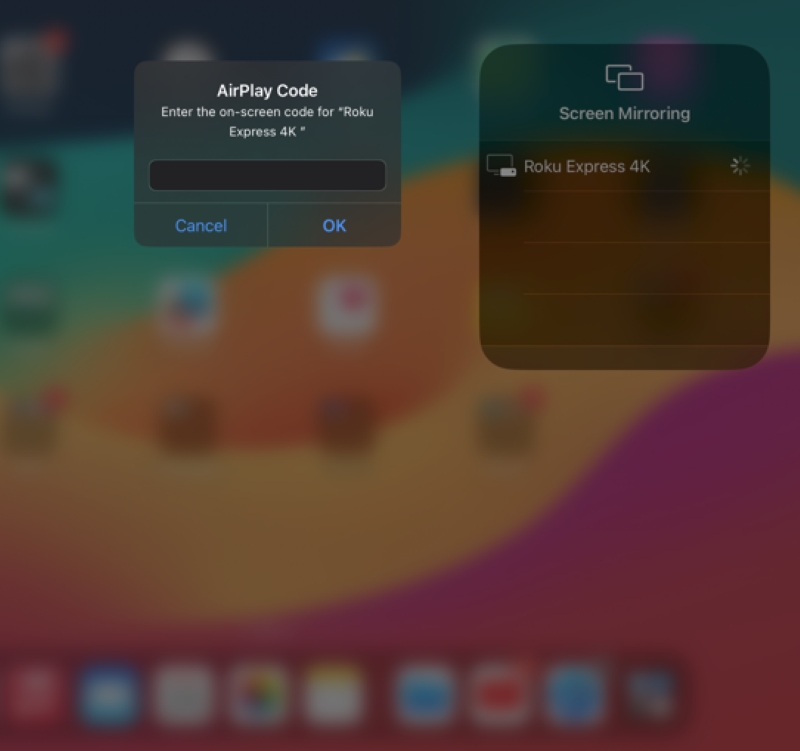
Now, you should be able to see your iPad’s screen on the projector.
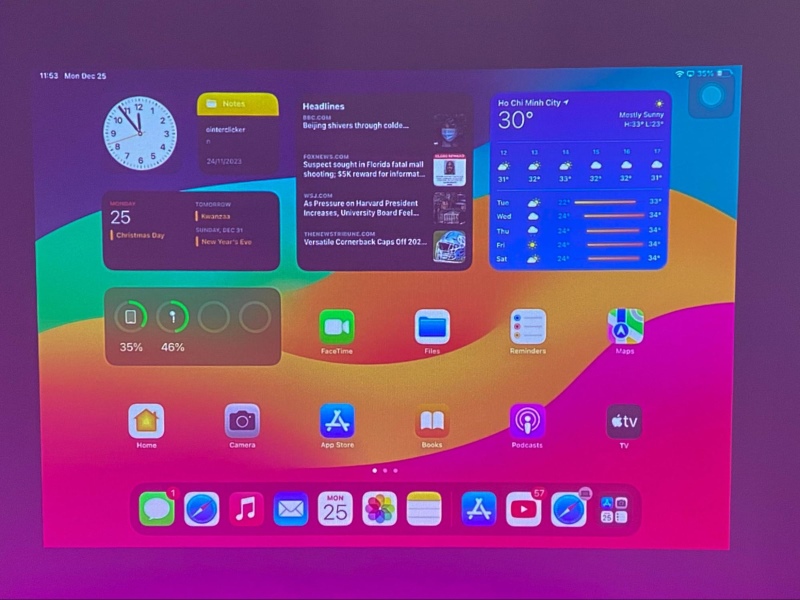
Use the Built-In Screen Mirroring Feature for Smart Projectors
Smart projectors, like my XGIMI MoGo 2 which runs on Android TV OS, let you show your tablet’s entire screen on the projector.
Here’s how you can do it with iPad or Android tablets.
For iPads
I’ll show you how to wirelessly share my 10th generation iPad’s screen with my XGIMI MoGo 2 projector as an example.
Step 1: On the XGIMI projector, go to the App Store, find the MagiCast app, then download and open it.
Note: MagiCast is a tool developed by XGIMI.
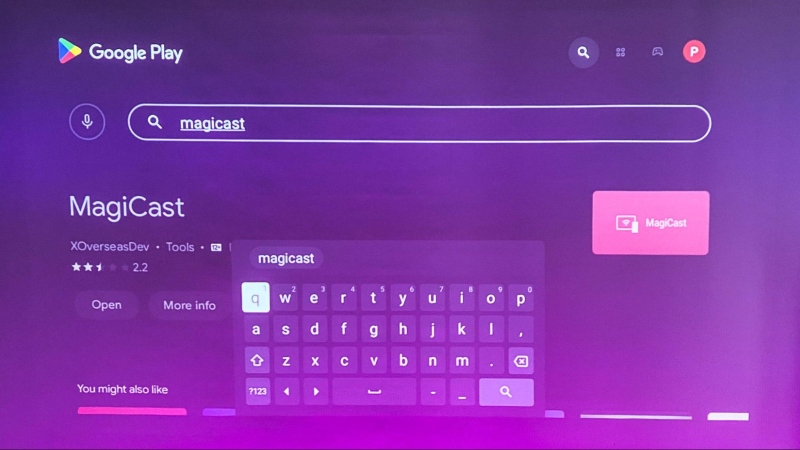
Step 2: Make sure your iPad and the projector are connected to the same Wi-Fi network.
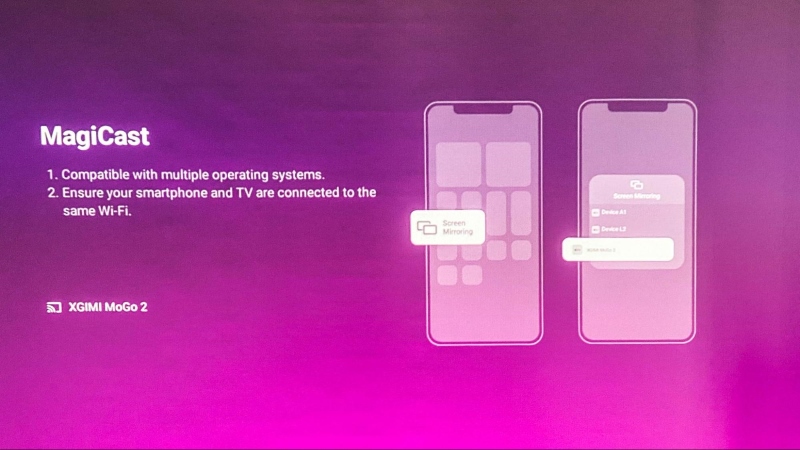
Step 3: On your iPad, swipe down to see the control center, then click on the Screen Mirroring icon.
Step 4: Pick the XGIMI MoGo 2 from the list of devices.
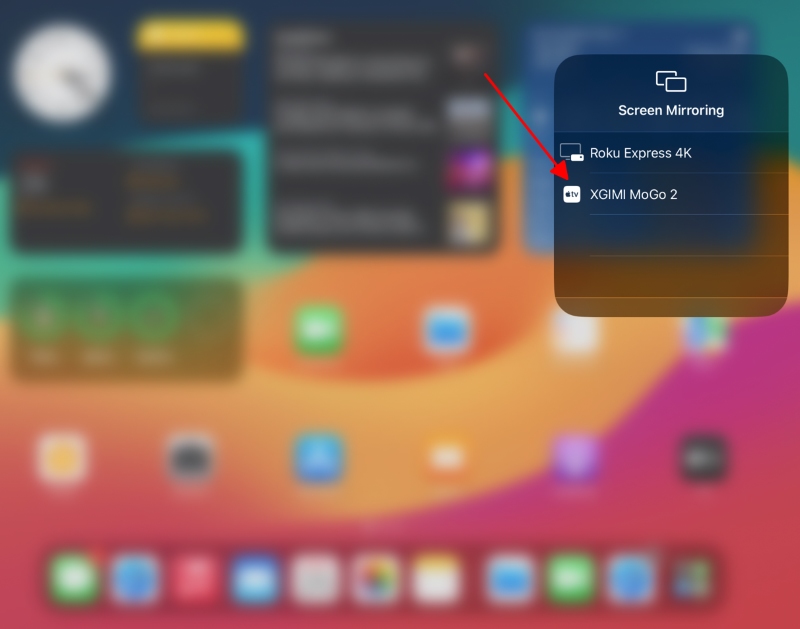
Your iPad screen should now appear on the projector.
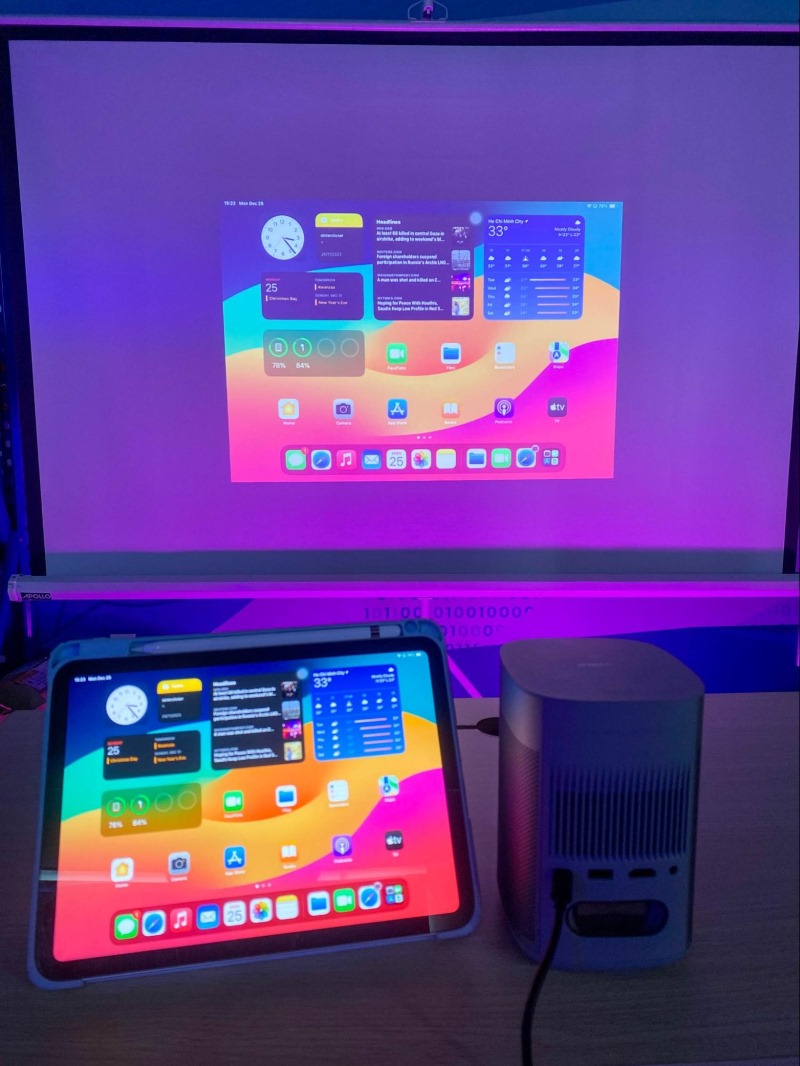
For Android Tablets
Now, if you have an Android tablet, the steps are a bit different.
Step 1: Install the “Google Home” app on your tablet.
Step 2: Connect your tablet and the projector to the same Wi-Fi network.
Step 3: Open the Google Home app on your tablet, and choose the projector from the list of devices.
Step 4: Tap the “Cast my screen” button to finish the setup.
To see how this is done, you can watch the tutorial video below.
Cast From a Streaming App (Such As YouTube, or Netflix)
You can also share videos from streaming apps such as YouTube or Netflix on your tablet straight to your smart projector.
For example, here’s how I stream a YouTube video from my iPad to my XGIMI projector:
Step 1: Ensure both the iPad and projector are on the same Wi-Fi network.
Step 2: Open YouTube on the iPad, and play a video.
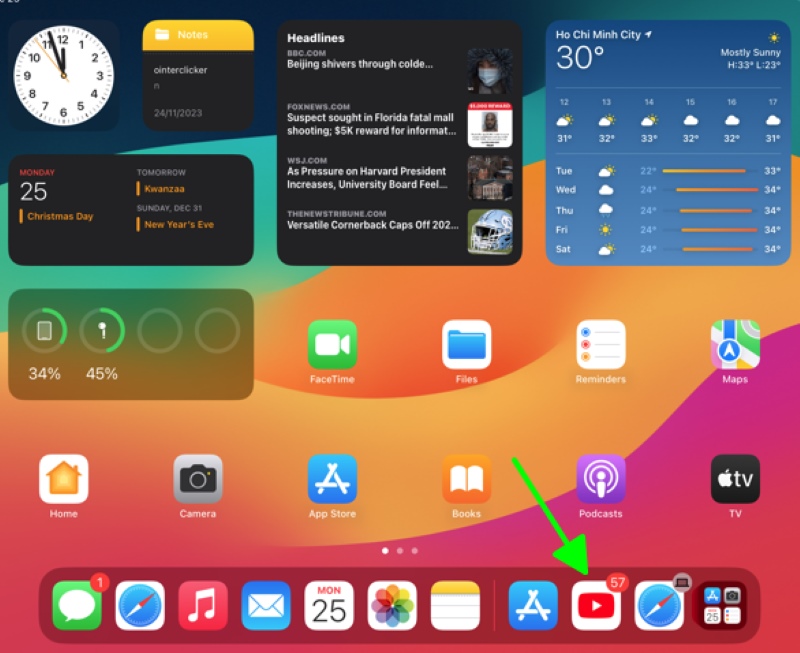
Step 3: Tap the ‘Cast‘ button.
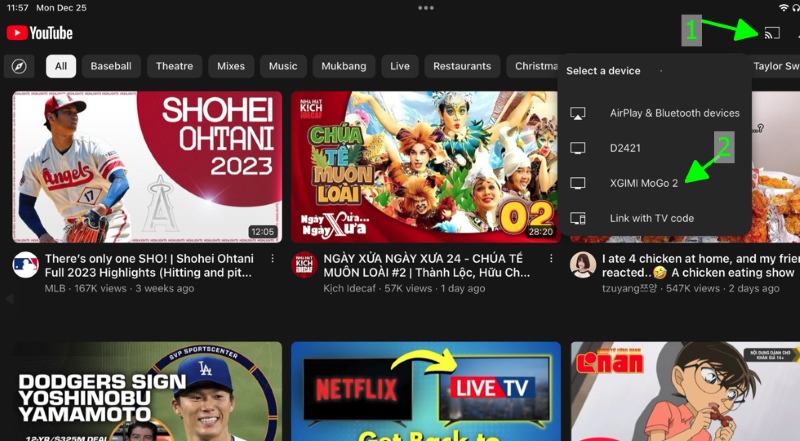
Step 4: Select the projector from the devices list to finish setting it up.
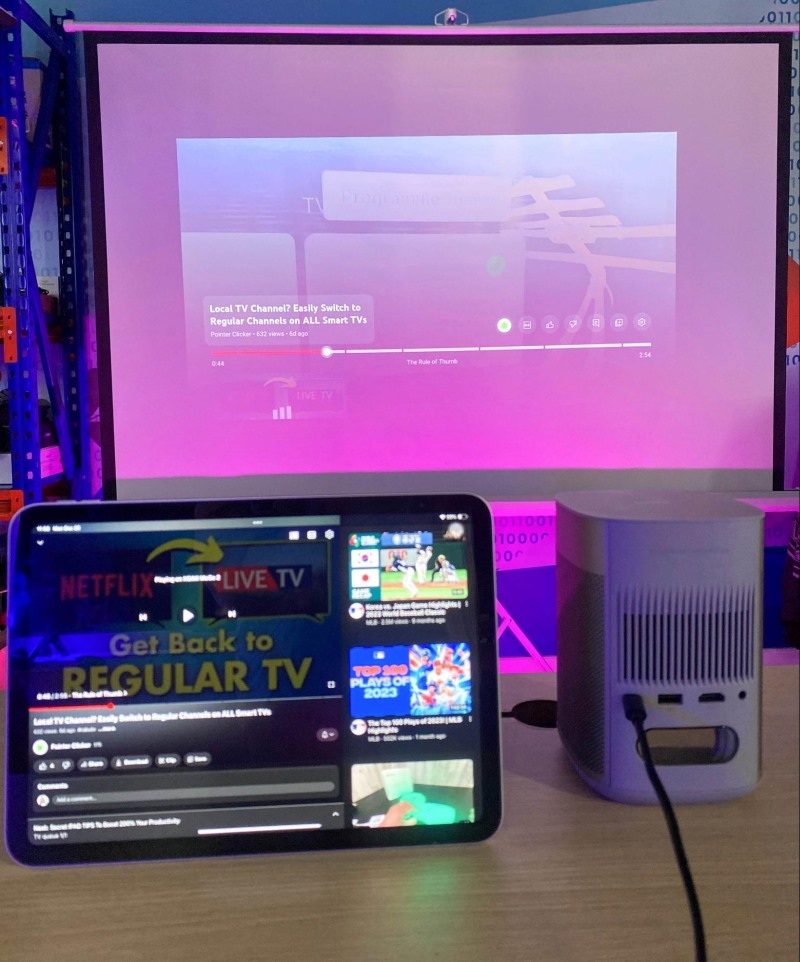
Wired Solutions
Because the connection ports on tablets and projectors are usually different, users will have to find the right kind of converters to connect their tablets to the projectors.
Below, we’ll show the most common use cases.
USB-C to HDMI Converter
Most new tablets, such as the iPad Pro or the Samsung Galaxy Tab S9, come with a special plug called a USB-C port.
You typically use this port to charge your tablet, but it can also send what’s on your tablet’s screen to a bigger screen like a TV or projector.
If you want to show your tablet’s screen on a projector, you’ll need a USB-C to HDMI converter. This adapter is like a magic bridge that connects your tablet to the projector.
I’m going to show you how to do this using my USB-C hub. I don’t have the exact USB-C to HDMI adapter, but my hub works just the same way.
Follow these steps:
Step 1: Take the USB-C side of the converter and plug it into the USB-C port on your tablet.
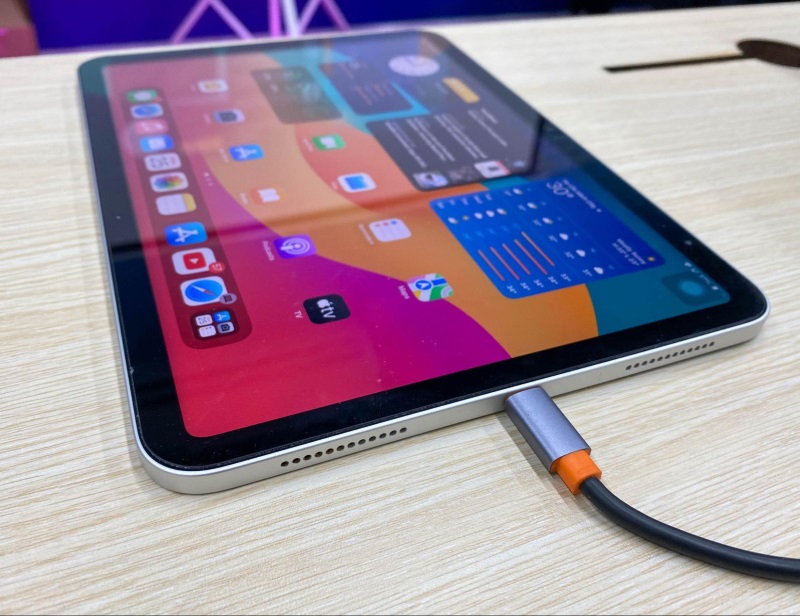
Step 2: Now, grab an HDMI cable and connect one end to the HDMI out port on the converter. Then, plug the other end into the HDMI port on your projector.
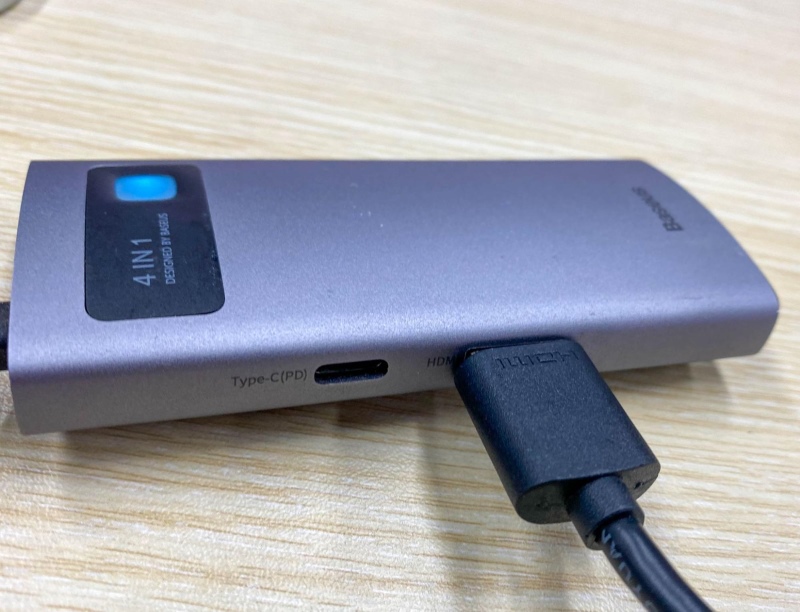
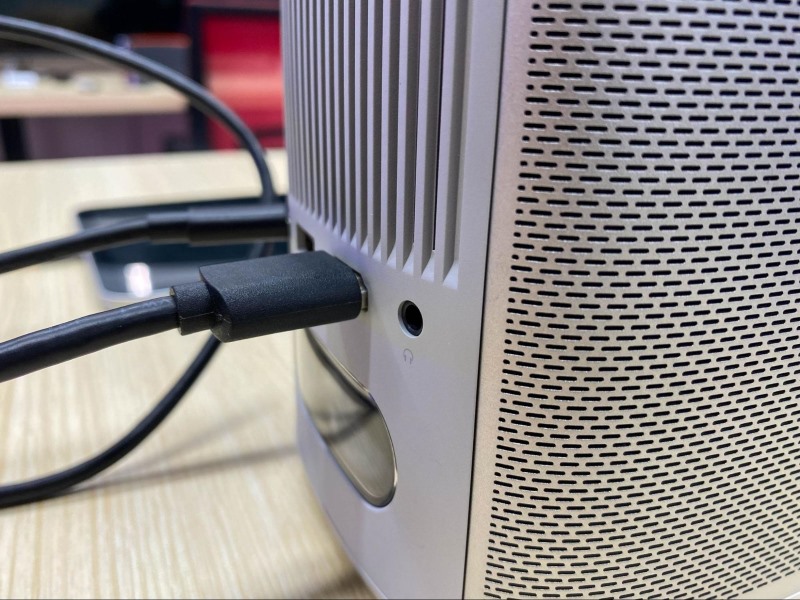
Step 3: Finally, if your projector isn’t already showing your iPad’s screen, you might need to switch the projector’s input source to HDMI.
This way, you’ll see everything from your iPad on the big projector screen.
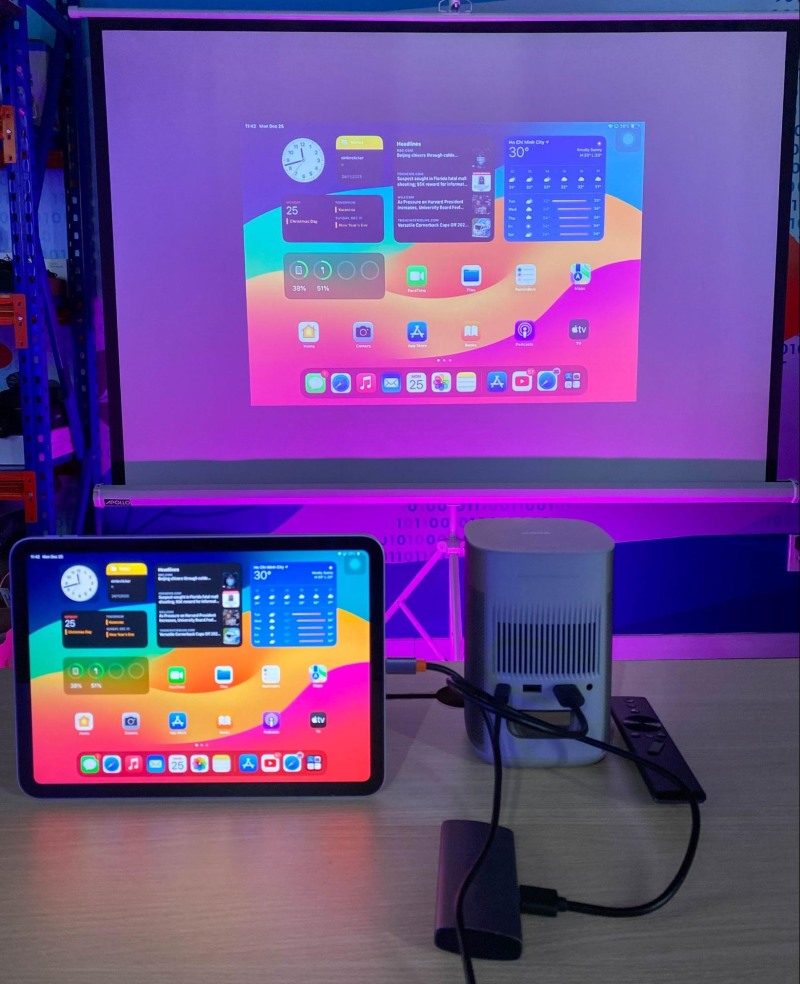
Lightning to HDMI Converter (for Old iPad Models)
If you have an older iPad, like the 9th generation one, it comes with a Lightning port, not a USB-C.
This can be a little tricky when you want to show something on a bigger screen, like a projector.
But don’t worry, you can use a Lightning to HDMI converter to make it work.
Here’s a simple way to do it:
Step 1: Take the Lightning to HDMI converter and plug its small Lightning end into the Lightning port of your iPad.
Step 2: Next, grab an HDMI cable. Connect one end of this cable to the HDMI port on the converter.
The other end goes into the HDMI port on the projector.
Step 3: Sometimes, you might need to tweak the projector’s input settings to HDMI.
If you’re more of a visual learner, check out the video below to see how it’s done.
USB-C to VGA Converter
Do you have an older projector that doesn’t have an HDMI port but has a VGA port instead?
Don’t worry, you can still connect modern devices like tablets to it!
Here’s how you can use a USB-C to VGA converter to make it work.
Step 1: Take the USB-C end of the converter and plug it right into your iPad.
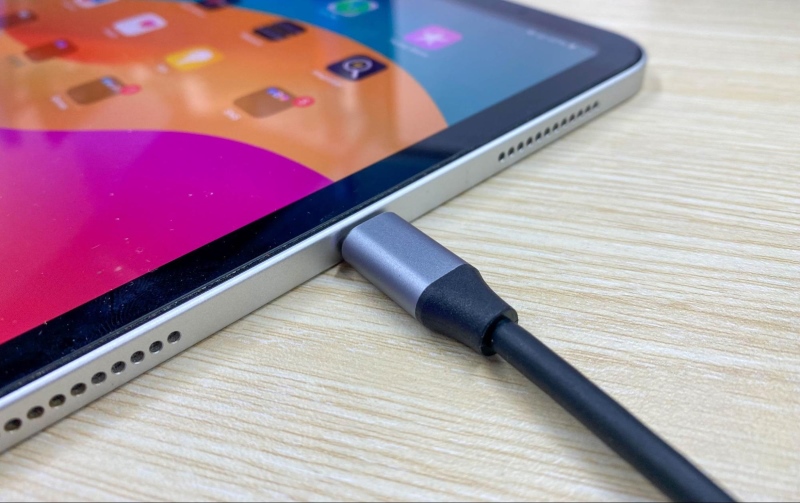
Step 2: Next, grab a VGA cable and connect one end to the converter and the other end to the VGA port on the projector.
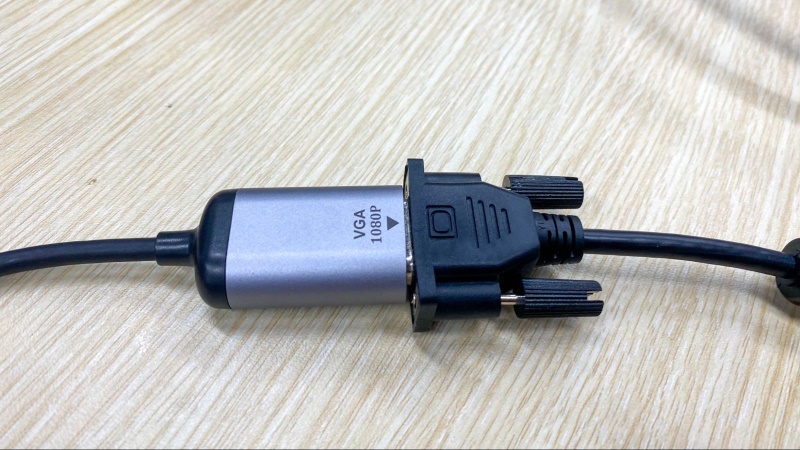
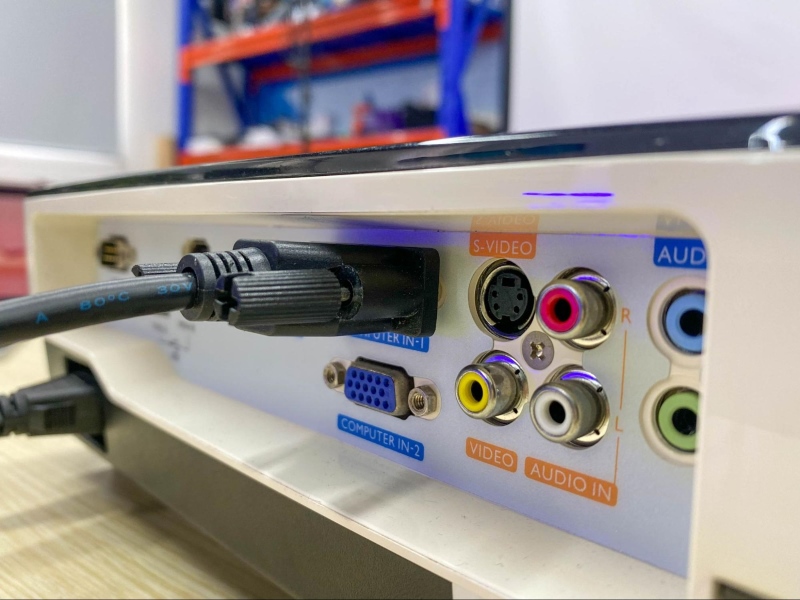
Step 3: Finally, on the projector, switch the input setting to VGA. This tells the projector to use the new connection you just made.
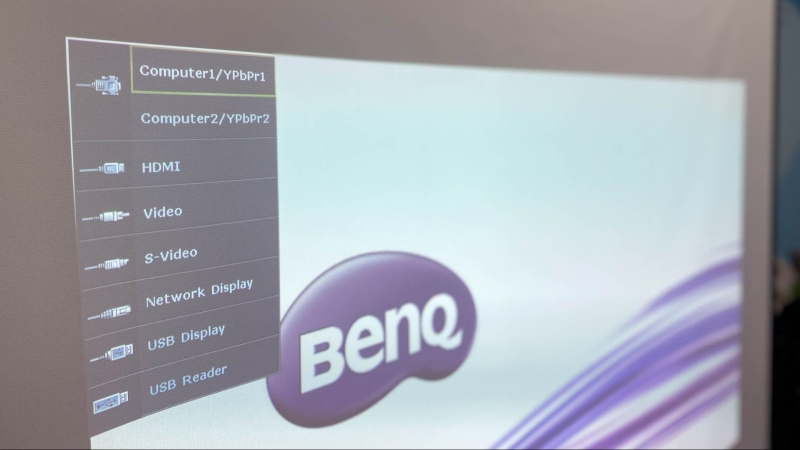
And that’s it! Now you can show whatever is on your iPad on the big screen through the projector.
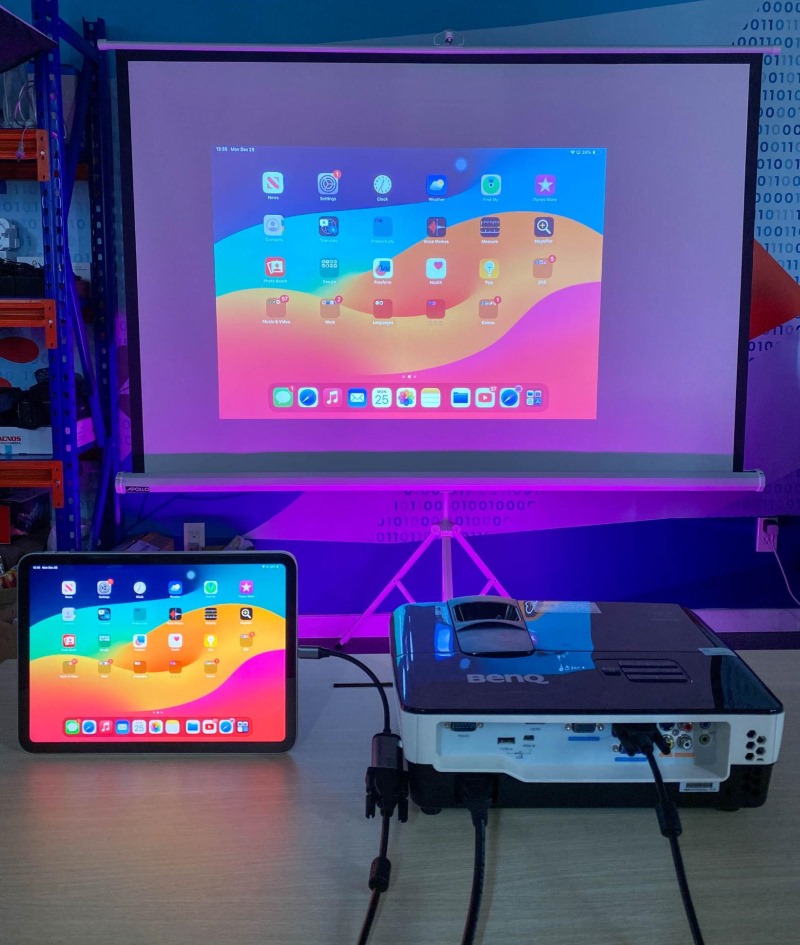
This is super handy for sharing videos, photos, or presentations when you’re using older equipment.
MHL to HDMI Converter
Some older tablets, including the Sony Xperia Z4 and the Samsung Galaxy Note 10.1 (2014 edition), are equipped with a special video output port known as MHL, which is similar to the familiar micro-USB port.
To display content from these older tablets on a larger screen, such as a projector, you can use an MHL to HDMI converter.
This adapter acts as a bridge, enabling your tablet to connect with the projector to share videos, photos, or presentations on a larger screen for everyone to see.
For a clear guide on how to set this up, watch the video provided below. It will give you simple, step-by-step instructions on how to use the adapter.
Meet Vance. He’s a proud dad, a seasoned Electronics Engineer, and an avid tech lover. His proficiency in electronics and troubleshooting skills were instrumental in crafting Pointer Clicker. Vance is passionate about simplifying tech for those who aren’t well-versed in it.

